

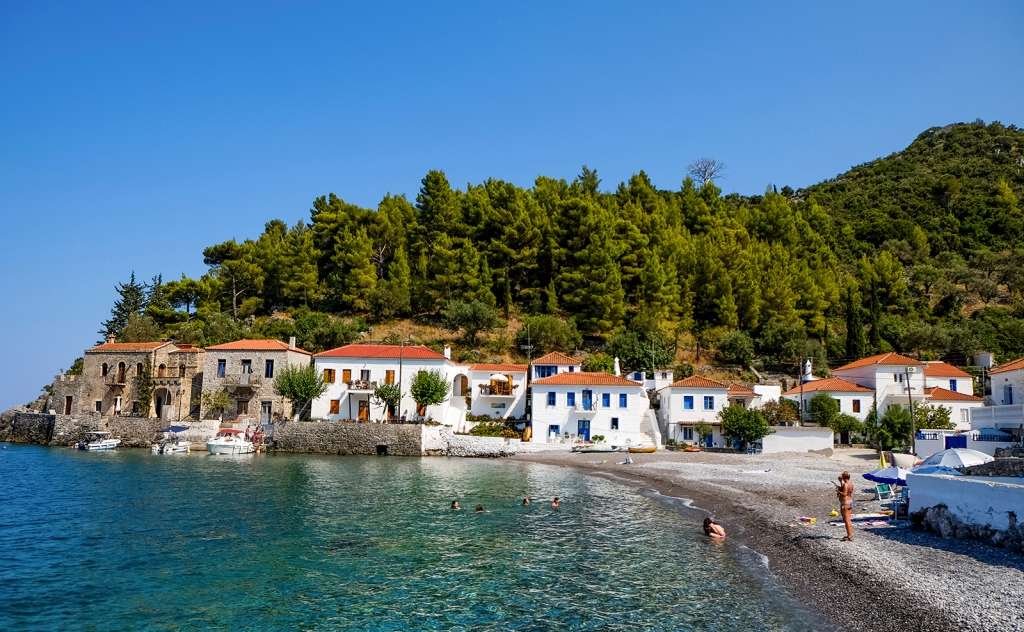

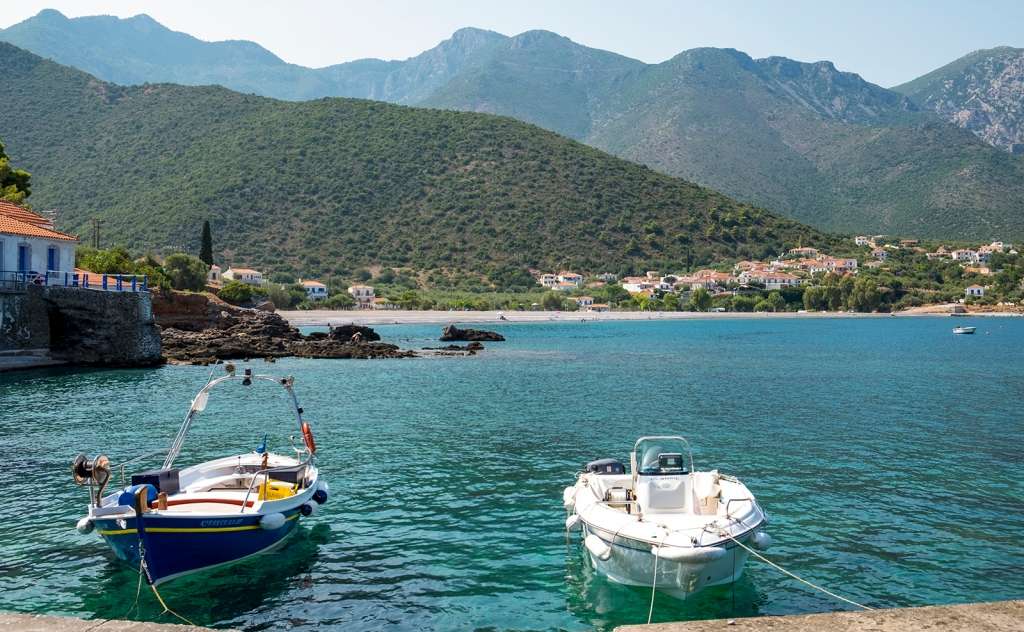
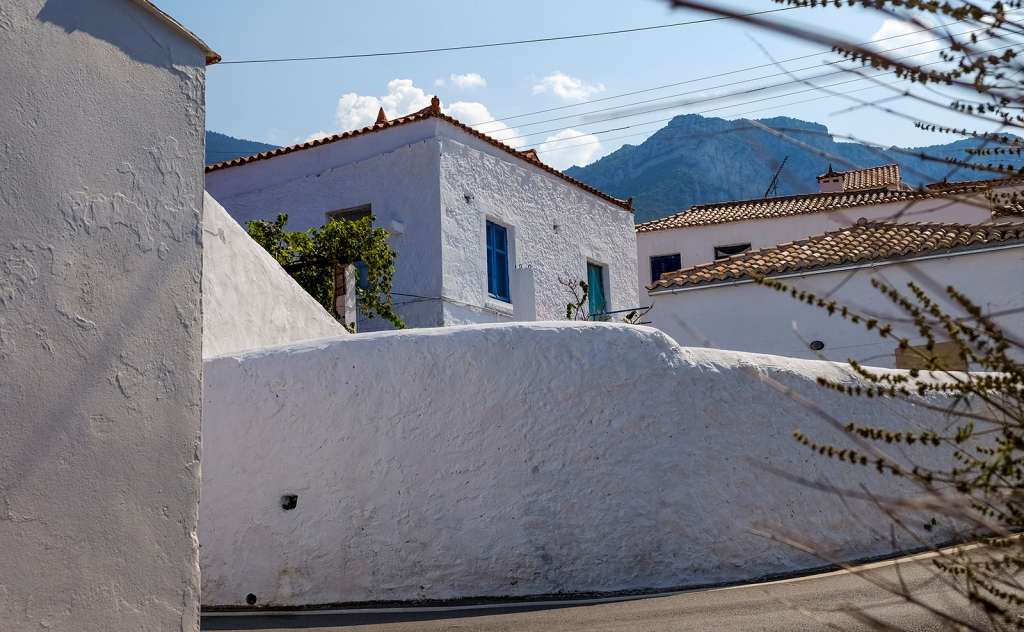
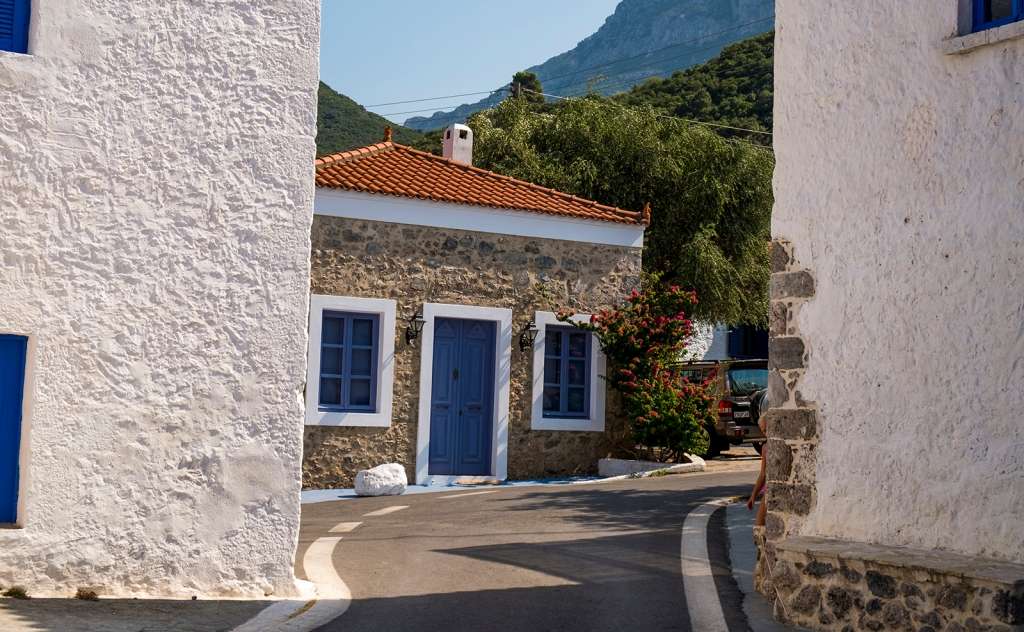
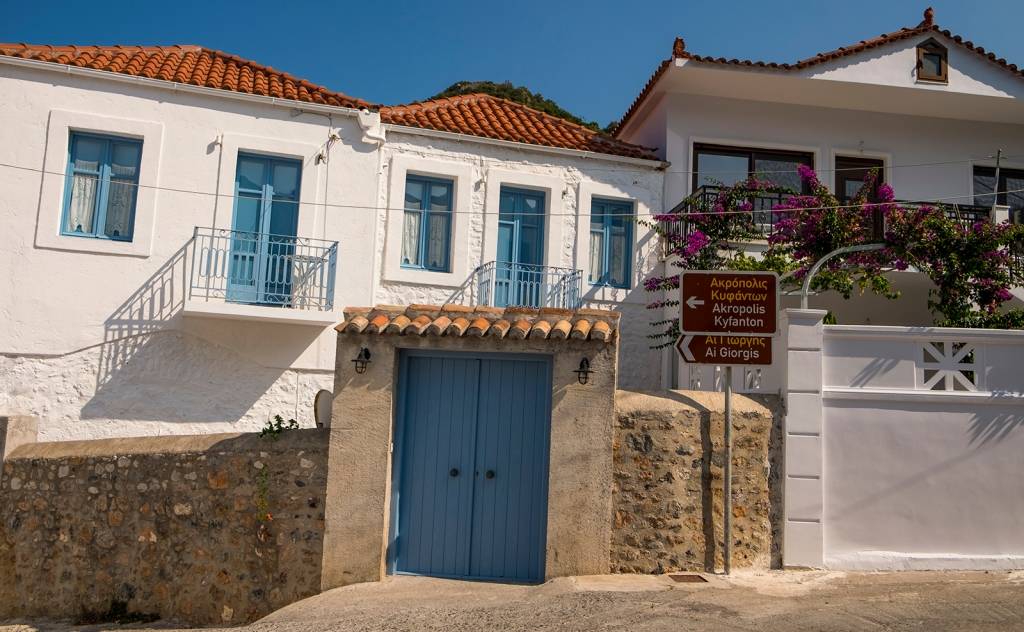
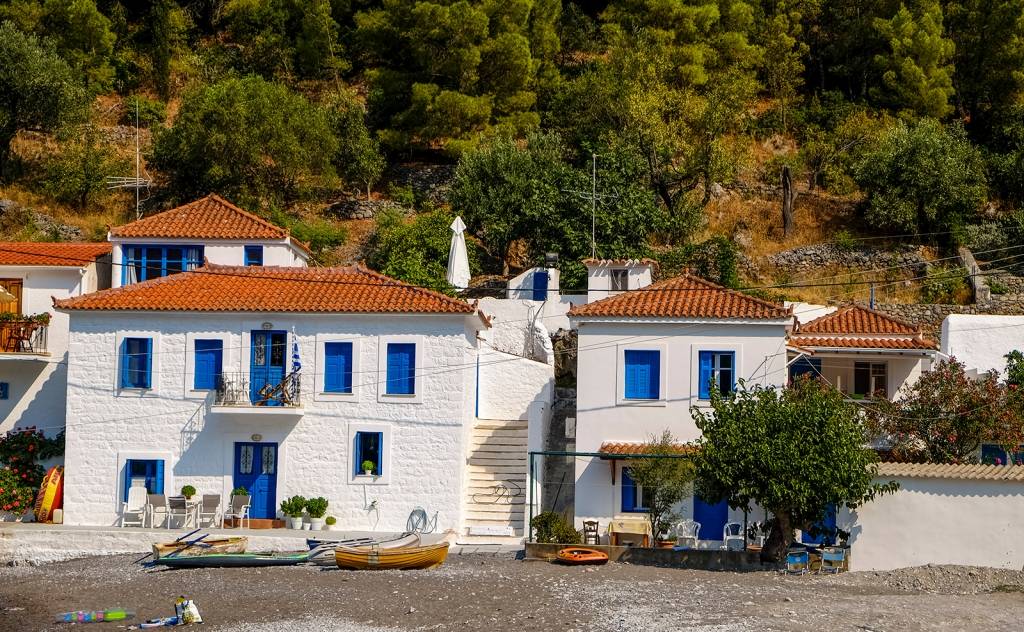

At the foothills of Parnonas, between Leonidio and Monemvasia, Kyparissi, a traditional settlement that retains its picturesque character, lies. Kyparissi was isolated from the rest of Greece until 1970, as there was no road network. The settlement was built in such a way that it was protected by pirates who used to loot the coasts of the Peloponnese. Later, when there was no longer any danger, Paralia and Metropolis's seaside settlements were created.
Kyparissi turns into a tourist centre with rooms to let, taverns and cafes that satisfy all visitors during the summer months. In the settlement of Paralia, there are some of the most beautiful traditional houses, which literally touch the sea. Their chronological origin is confirmed by the inscriptions written on their facades. Visitors can enjoy a swim at Megali Ammos, a beach located between the beach and the Metropolis, just 50 metres from the port. A bit further north (2 kilometres from Kyparissi) is the pebbly beach of Agia Kyriaki, which is deserted at its southern end.
Kyparissi is built on the site of the ancient city of Kyphantas (today's Paleochora), known for its spring waters, hence its second name, "Vrysi". It was called "Kyphantas" because of the area's morphology with steep ravines and mountain curves, from the word "kyphos", which means hump. During the Roman and early Byzantine years, the traces of the ancient city were lost. Unfortunately, there are no written testimonies, except for a reference of Pausanias in his work "Laconicus", who passed from Kyphantas at the end of the 2nd century and found the area ruined. According to him, the city was built to the right of the ravine of springs and was protected by a wall, a small part of which is still preserved today. In about 1000 AD, a new settlement appeared in the area called Kyparissia or Kyparissi. There are two versions of this name: either because there were many cypress trees (kyparissi) in the area or because of the landlord who was named Kyparissis.
Cyphantas was known for being one of the essential Asclepieias. Patients used to enter troughs carved into the rock filled with heated water, which was gushing from the mountain. According to mythology, Atalanti hit a rock with her spear, which began to run water. The marble statue of Asclepius was in the sacred cave. The location of this cave is high on the rock above the aqueduct, and the visitor can reach it by following a small, uphill path.
If you are in the area, the Castle of Kalogria in the area of Kastelli is worth visiting. The ruins of the Castle are located on a low coastal hill between the settlement and the beach of Kyparissi. Apart from the defensive protection, the hill's position is such as to hide the settlement from the sea. Unfortunately, the history of the Castle is not known, but it is referred to as "Byzantine". Also interesting is the village school, which dates back to the early 1900s and has been described as traditional and preserved. During the German occupation, it was used by the Germans and the Italians. In fact, it is said that there was a Jewish district in the school area, and in fact, the area is still called Ovreika.
At Kyparissi, visitors can find three important temples: The Dormition of the Theotokos Virgin Mary is a three-aisled church with a dome and a matroneum (women’s chamber) built in 1893. It is the parish church of all the settlements and villages and is located in Vrysi. The Holy Trinity Cemetery was built in 1883 in the Paralia suburb. It is even said that its floor tiles were moved from a Jewish temple. The church of Zoodochos Pigi is located in the Metropolis suburb and is associated with the slaughter of the village's inhabitants by pirates around 1200. The church was rebuilt in 1985. Finally, around Kyparissi, seven chapels are awaiting you to be discovered.